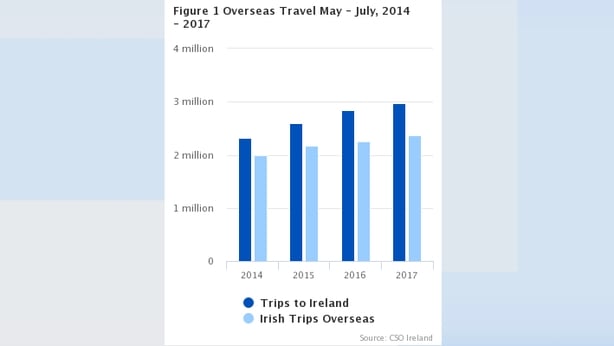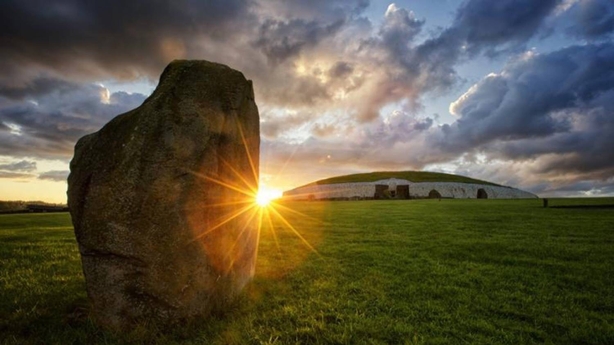The number of British visitors coming to Ireland between May and July fell by 3.8% to 978,700, when compared with the same period last year.
However, latest figures from the Central Statistics Office also show the drop-off in UK visits has been somewhat offset by a significant rise in the number of travellers coming to Ireland from North America.
Trips by residents of North America to Ireland increased by 12.3% between May and July to 713,600, while visits from 'Other Europe' (excluding the UK) were 5.4% higher at 1,075,500.
During the three-month period, the total number of trips to Ireland increased by 4.4% to 2,967,600 - an overall increase of 124,200 when compared with the same period twelve months earlier.

The number of UK visits has been badly affected by the severe drop in the value of sterling against the euro, which had made Ireland a much more expensive destination for British tourists.
The pound has devalued by almost 21.5% against the euro since before the Brexit vote in June 2016, with the value of the euro rising from £0.7649 immediately before the referendum to £0.9291 now.
With the euro also strengthening significantly against the US dollar in recent times, Ireland is also becoming considerably more expensive for American tourists - a potential growth market identified by Tourism Ireland as being key to mitigating the Brexit-related fall-off in UK visits.
Brewing US fiscal problems have seen the euro break through the $1.20 barrier for the first time in over two and a half years today.
While welcoming the figures, Tourism Ireland CEO Niall Gibbons said the organisation is "extremely conscious of the decline in tourist numbers we’ve seen for the month of July alone".
He added that "the decline in the value of sterling has made holidays and short breaks here more expensive for British visitors; and economic uncertainty is undoubtedly making British travellers more cautious about their discretionary spending".

Mr Gibbons also said "competitiveness and the value for money message are more important than ever in Britain right now.
"Tourism Ireland is placing a greater focus on our ‘culturally curious’ audience, who are less impacted by currency fluctuations. We are also undertaking an expanded partnership programme with airlines, ferry operators and tour operators, communicating a strong price-led message."
The Irish Tourism Industry Confederation has also expressed concern over the drop-off in British visitors.
Chief Executive of the ITIC Eoghan O’Mara Walsh said: "The impact of Brexit is already a reality for the Irish tourism industry and we estimate that the Brexit effect will cost Irish tourism at least €100m in 2017.
"With 137,800 fewer British people visiting Ireland already this year it is more important than ever that the Government recognises this in the upcoming Budget and supports Irish tourism through maintaining competitiveness and restoring tourism budgets."

